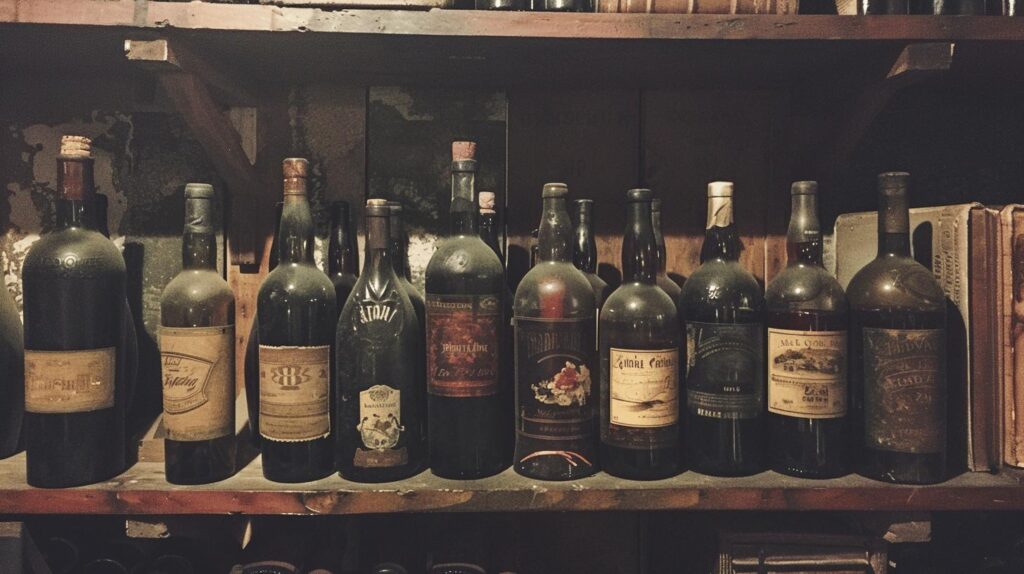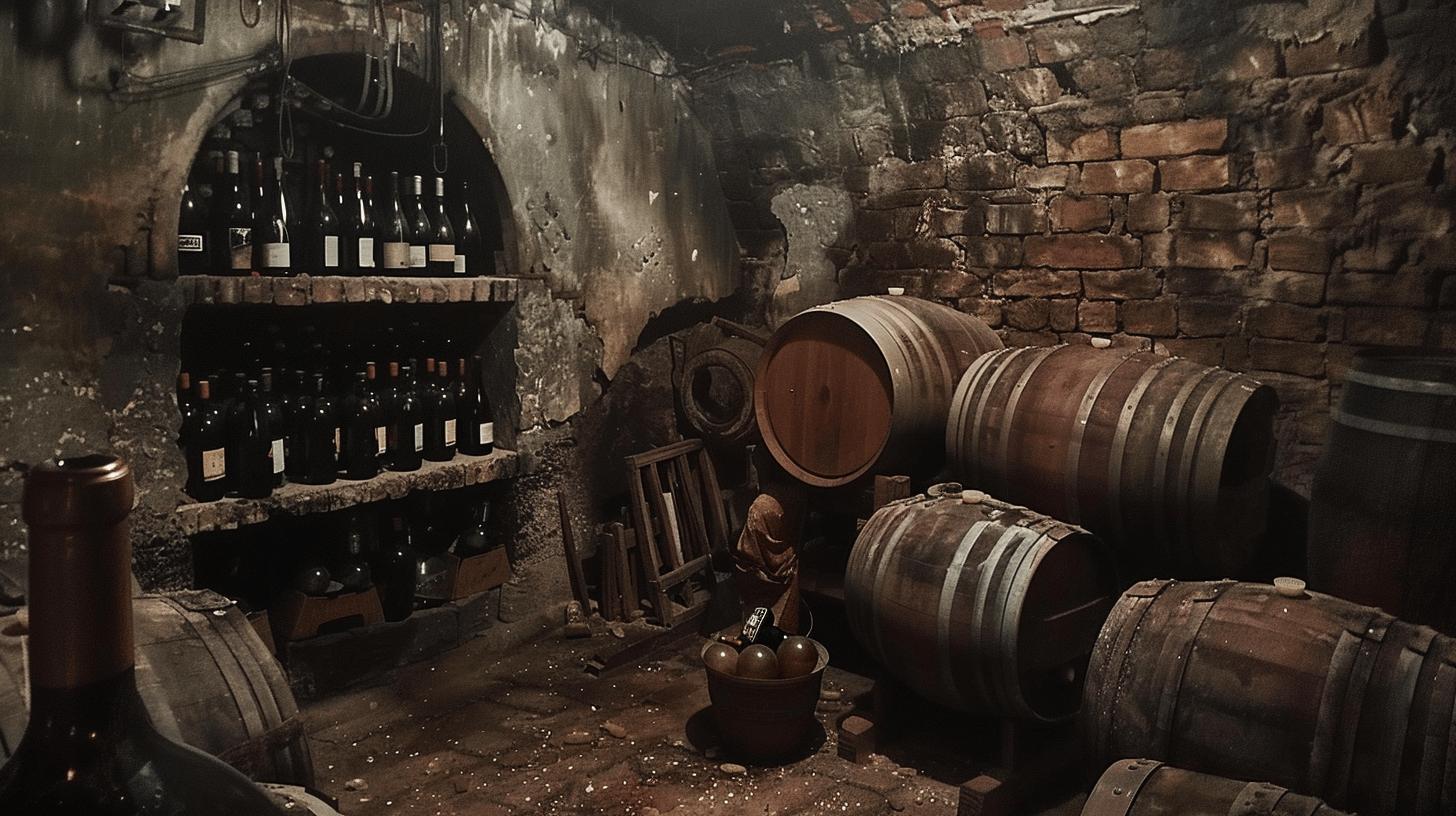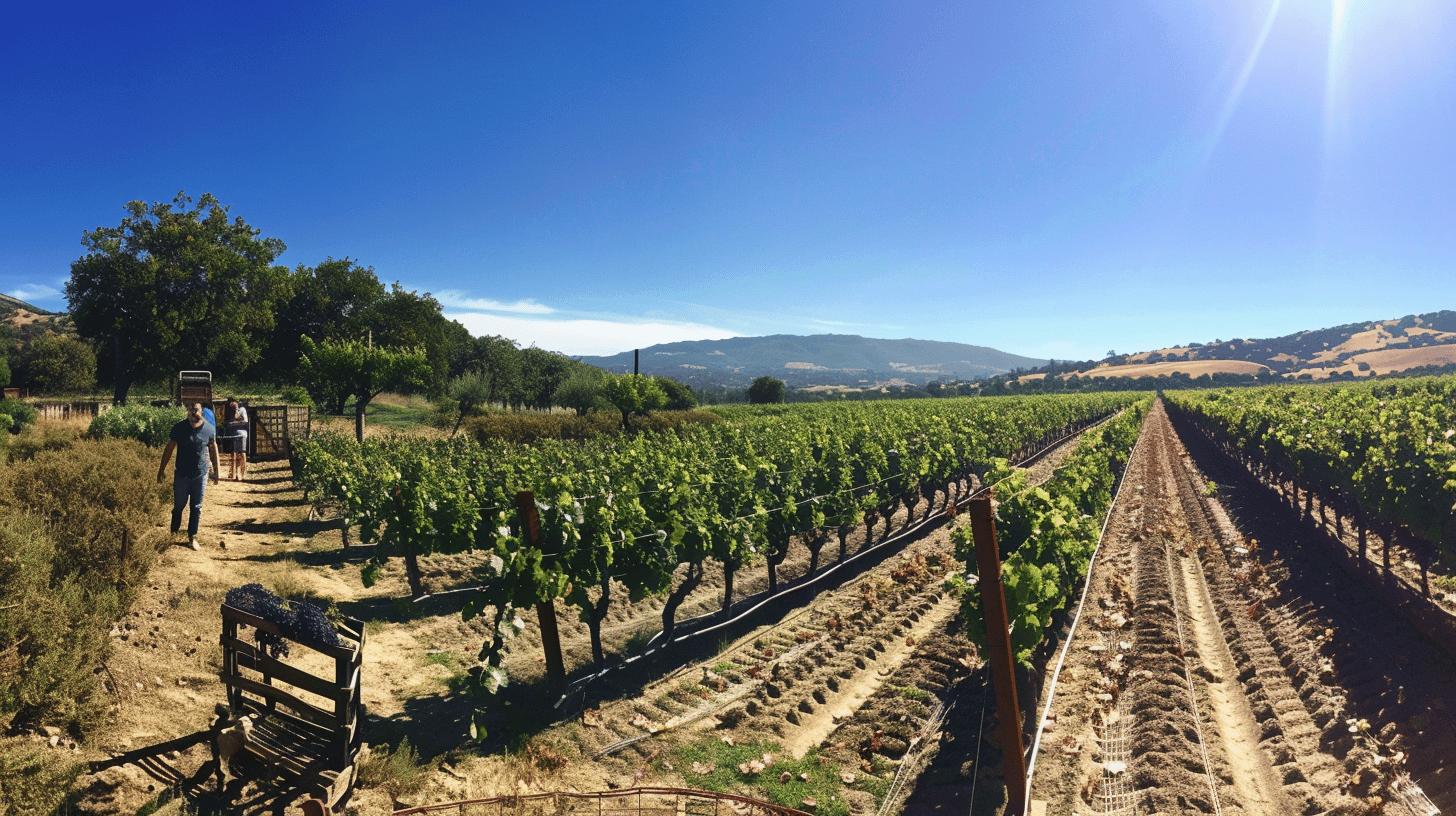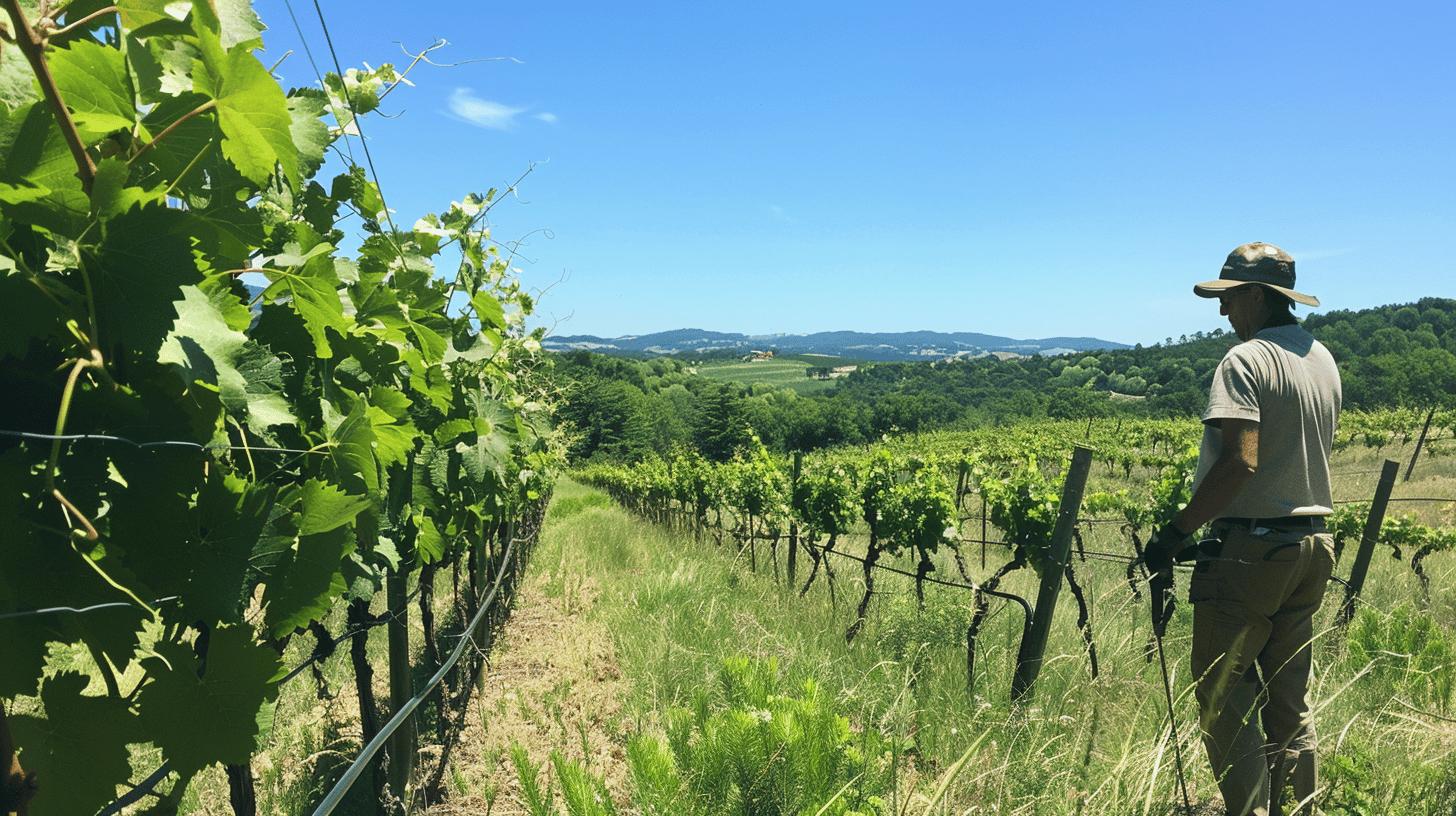Imagine living in a time where enjoying a glass of wine was illegal. That’s right, for 13 years, Americans had to navigate an underground world just to sip a bit of vino! How Prohibition shaped the American wine industry is a tale of resilience, creativity, and an unexpected lasting impact.

From transforming vineyards into juice factories to the rise of speakeasies, this era forced winemakers to get crafty. Ready to uncover how a nationwide alcohol ban changed the wine game forever? Let’s dive in!
The Prohibition Era and its Impact on American Wine
Prohibition in the United States, spanning from January 17, 1920, to December 5, 1933, was a transformative period for the nation. The 18th Amendment made the production, sale, and transportation of alcohol illegal. This sweeping alcohol ban intended to curb societal issues associated with excessive drinking.
At the time, the average American consumed nearly seven gallons of pure alcohol annually, a stark contrast to today’s average. The effort to enforce Prohibition was costly, with enforcement expenses reaching $300 million and a staggering loss of $11 billion in tax revenue.
Key Statistics and Facts about Prohibition:
- Prohibition lasted from January 17, 1920, to December 5, 1933
- The average American in the 1800s consumed nearly seven gallons of pure alcohol annually
- Prohibition enforcement cost $300 million
- The government lost $11 billion in tax revenue due to Prohibition
- The 18th Amendment made the production, sale, and transportation of alcohol illegal
The immediate impact on the American wine industry was profound. Many vineyards and wineries, unable to legally sell their wine, were forced to shut down. Some adapted by selling grape juice or converting their vineyards to produce other crops. The quality of wine also suffered, with some winemakers turning to subpar ingredients and methods to continue production illicitly.
The general public’s reaction was mixed. While some supported the moral and health aims of Prohibition, others turned to illegal means to obtain alcohol. Speakeasies and underground markets flourished, and home winemaking became more common, often resulting in inconsistent and sometimes dangerous products. This period of restricted legal wine consumption reshaped the landscape of the American wine industry for years to come.
The Volstead Act and Wine Industry Regulations

The Volstead Act, formally known as the National Prohibition Act, was the legislation that enabled the enforcement of the 18th Amendment. Passed in 1919, it defined the legal parameters of Prohibition and gave federal agents the authority to investigate and prosecute violations.
One critical aspect of the Volstead Act was its exemption for sacramental wines, allowing wine production for religious purposes to continue. This loophole provided a lifeline for some wineries, enabling them to maintain operations despite the general ban on alcohol production and sale.
| Provision | Impact on Wine Industry |
|---|---|
| Ban on production, sale, and transportation of alcohol | Forced most wineries to shut down or shift to other products |
| Exemption for sacramental wines | Allowed some wineries to continue limited production |
| Authorization for federal agents to enforce Prohibition | Increased raids and shutdowns of illegal wine operations |
| Definition of “intoxicating liquor” as any beverage containing more than 0.5% alcohol | Severely limited the legal production of traditional wines |
| Allowance for home production of up to 200 gallons of non-intoxicating fruit juice per year | Led to a rise in home winemaking under the guise of fruit juice production |
Some wineries cleverly leveraged the sacramental wine exemption to keep their businesses afloat. They ramped up production of wines for religious ceremonies, often seeing a dramatic increase in the demand for such products.
This allowed them to preserve their vineyards and maintain a semblance of their original operations. Additionally, some winemakers produced grape bricks—concentrated blocks of grape juice with explicit instructions on how to avoid fermentation—thus providing a legal workaround that kept the wine culture alive during Prohibition.
The Rise of Speakeasies and Bootlegging
When Prohibition kicked in, the American wine industry faced a significant shake-up. Speakeasies—the hidden, illicit bars—began to sprout like mushrooms after rain. These secret establishments became the go-to spots for those seeking a forbidden sip.
The allure of these underground venues wasn’t just about the booze; it was about the thrill of defying the law and mingling in an exclusive, hush-hush environment. Speakeasies played a crucial role in sustaining the underground wine market, helping to keep the culture of wine consumption alive despite the government’s best efforts to suppress it.
Notable Bootlegging Figures and Operations:
- Al Capone: Infamous for his bootlegging empire in Chicago, which included illegal wine distribution.
- George Remus: Known as the “King of the Bootleggers,” Remus operated an extensive network that supplied alcohol, including wine, to speakeasies.
- Meyer Lansky: A key figure in organized crime, Lansky helped set up efficient bootlegging operations.
- “The Purple Gang”: This Detroit-based gang specialized in smuggling Canadian alcohol, including wine, into the U.S.
Organized crime flourished during Prohibition, with bootleggers and crime syndicates stepping in to fill the demand for alcohol. These groups often operated sophisticated networks that included wineries covertly producing wine under the radar.
The involvement of organized crime brought a level of efficiency and ruthlessness to the illegal alcohol trade that was previously unseen. These clandestine operations ensured that wine—and other spirits—continued to flow, often at a steep price.
The impact on legitimate wineries was devastating. Many were either forced to shut down or shift to producing other agricultural products to survive. The quality and reputation of American wine took a hit, as the focus shifted from artistry to quantity in the underground market. The long-term effects of this period reshaped the American wine industry, influencing consumer tastes and the economic landscape for years to come.
Adaptations by Grape Growers and Winemakers

During Prohibition, grape growers and winemakers had to pivot creatively to keep their businesses alive. Many shifted from producing wine to making non-alcoholic products like raisins, grape juice, and jam, using Concord grapes. The demand for these products soared as they became a legal alternative to alcoholic beverages.
Another clever adaptation was the sale of grape bricks. These were concentrated blocks of grape juice labeled as ‘fruit juice,’ complete with instructions on how to avoid fermentation. This loophole allowed people to produce up to 200 gallons of wine annually for personal use, keeping some vineyards in business.
Creative Adaptations by Vineyards and Wineries:
- Production of non-alcoholic grape juice
- Manufacturing grape bricks with ‘do-not-ferment’ instructions
- Switching to growing table grapes instead of wine grapes
- Diversifying into other agricultural products like jellies and jams
- Utilizing vineyards for other fruits and vegetables
Despite these strategies, winemakers faced numerous challenges. The prohibition on alcohol meant they had to navigate complex legal landscapes to stay afloat. The quality of products often declined, and maintaining the vineyards without the revenue from wine sales was tough.
Additionally, many winemakers struggled with the loss of craft and tradition, as the focus shifted from artistry to survival. The era was marked by resilience and ingenuity, but it also left a lasting impact on the American wine industry.
The Economic and Cultural Shifts in Wine Consumption
When Prohibition took effect, consumer preferences underwent a dramatic shift. Many people turned to homemade wine, leading to a surge in hastily fermented, potent concoctions. The quality of home-produced alcohol, including wine, declined significantly.
While homemade wine was generally less dangerous than other types of illicit alcohol, the inconsistency in production methods often resulted in poor taste and quality. Instead of savoring fine wines, people were now seeking more potent beverages that could be quickly produced in makeshift environments.
Economic Consequences of Prohibition on the Wine Industry:
- Significant loss of revenue for legitimate wineries
- Costs associated with transitioning to non-alcoholic products
- Increased expenses for enforcement and legal compliance
- Economic downturn due to the closing of many vineyards
The societal changes brought about by Prohibition were profound. Wine consumption, previously a more refined and social activity, became associated with the clandestine and often dangerous world of illegal alcohol. Speakeasies and underground markets became the norm, altering the cultural landscape of wine consumption. The allure of these hidden venues was not just in the wine but in the thrill of breaking the law and the social camaraderie it fostered.
Health issues also emerged during this period, as the lack of regulation led to the production of unsafe homemade liquors. While wine was generally safer, some homemade batches caused serious health problems.
The decline in quality and the rise in health risks contributed to the growing public dissatisfaction with Prohibition. These factors, coupled with the economic downturn of the 1930s and the inability of Prohibition to curb alcohol consumption, eventually led to its repeal, marking a new chapter in the American wine industry.
The Repeal of Prohibition and the Wine Industry Revival

On December 5, 1933, the 18th Amendment was repealed, marking a historic moment as the first time a Constitutional amendment was overturned. The end of Prohibition signaled the rebirth of the American wine industry, which had been crippled for over a decade. Winemakers wasted no time in returning to legal production, eagerly revamping their vineyards and wineries.
The immediate aftermath saw a surge in wine production as vineyards that had survived by operating in the shadows or switching to other crops returned to their original purpose. The focus shifted back to quality and artistry, with winemakers keen to restore their reputations and revitalize the industry.
Key Developments and Innovations in the Wine Industry Post-Prohibition:
- Introduction of new grape varieties: Winemakers experimented with and introduced new grape varieties to enhance the quality and diversity of American wines.
- Advancements in winemaking techniques: Modern techniques and equipment were adopted to improve the production process and wine quality.
- Expansion of wine education: Institutions and programs dedicated to wine education emerged, fostering a knowledgeable and passionate community of winemakers and enthusiasts.
- Growth of wine tourism: Vineyards opened their doors to tourists, offering tours and tastings that helped boost the industry’s profile and profitability.
In the long term, the repeal of Prohibition had significant effects on the American wine market. The industry experienced a renaissance, with a renewed emphasis on craftsmanship and innovation.
Consumer tastes evolved, and the demand for high-quality wines grew. The period following Prohibition laid the groundwork for the robust and diverse American wine industry we celebrate today, proving that resilience and adaptation can turn even the harshest of setbacks into opportunities for growth and excellence.
Final Words
Prohibition’s harsh laws turned the American wine industry upside down. The 18th Amendment set the stage, and the Volstead Act tightened the noose.
Despite the crackdown, speakeasies flourished, and organized crime had a field day. Meanwhile, clever grape growers found ways to keep their livelihoods afloat.
Fast forward to the Prohibition repeal, and the American wine industry began its comeback.
How Prohibition Shaped the American Wine Industry is a testament to resilience and adaptability. From those challenging times emerged a stronger, more innovative wine culture.
Raise a glass to history and the bright future ahead. Cheers! 🍷
FAQ
Autolysis in sparkling wine results in?
Autolysis in sparkling wine results in a creamy texture and complex flavors. It occurs when yeast cells break down, releasing proteins and amino acids into the wine.
Who are the Kings of Prohibition wine?
The Kings of Prohibition wine is a modern brand. It celebrates historic bootleggers who transported illegal wine during Prohibition, blending history with rich, bold wines.
What are Prohibition wine bricks?
Prohibition wine bricks were compressed grape concentrates sold with instructions on making “fruit juice.” Cleverly, they included warnings on how not to let the juice ferment into wine.
What is wine culture in America like?
Wine culture in America is diverse, with influences from European traditions and American innovation. It includes a mix of casual drinking, fine dining pairings, and vibrant wine tourism.
How did Prohibition affect the alcohol industry?
Prohibition significantly affected the alcohol industry by banning production and sales. Many breweries, distilleries, and wineries closed, while illegal operations and speakeasies flourished.
How did Prohibition shape American culture?
Prohibition shaped American culture by fostering a rebellious spirit and the rise of clandestine bars (speakeasies). It also led to organized crime controlling the illegal alcohol market.
What happened to wineries during Prohibition?
During Prohibition, many wineries shut down or switched to producing grape juice, raisins, or sacramental wine. Some survived by exploiting legal loopholes like the home wine production allowance.
Was wine part of Prohibition?
Yes, wine was part of Prohibition. The 18th Amendment made the production, sale, and transport of all alcoholic beverages illegal, including wine. However, sacramental wine was exempted.

